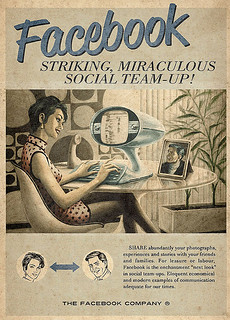 What do natural disasters and social media swarm-fueled diplomatic disasters, such as the recent anti-Islam film riots, have in common?
What do natural disasters and social media swarm-fueled diplomatic disasters, such as the recent anti-Islam film riots, have in common?
One hundred percent certainty that they will occur regularly, albeit unpredictably.
Now that one third of the world’s population has Internet access and 79 percent of people in the developing world have a mobile phone (more than the percentage with access to electricity), anything anybody writes on social media, no matter how small their audience, has the potential to go viral. This is especially true if an organization with an agenda and a large audience uses a social media post as a flash point.
Bottom line?
The diplomatic and pundit community ought to take note of the crisis communications insights the Social Media for Emergency Management (SMEM) and Federal Emergency Management Agency (FEMA) crowd on Twitter has developed and tested the last few years. Many of these insights could be useful in the U.S. Department of State’s transition to 21st century diplomacy and the debates it faces over whether diplomats should keep on tweeting and whether the public—which can be nondiplomatic and unstrategic as well as culturally unaware—can be trusted to help address misperceptions about the United States abroad.
A key point to remember in those debates is that the public is going to engage in conversations across borders whether diplomats and pundits like it or not. You can join with citizen diplomats (and minimize the risk of having the public’s actions force the hands of governments on foreign policy issues in an undesirable way). But you cannot stop global conversations… at least without resorting to draconian measures, such as cutting off the Internet.
The SMEM community has found that vigilance, preparation, engagement, and seeking feedback are key to empowering self-organizing online swarms to form positively around a crisis and fuel mass collaboration in a useful way (e.g., helping those in need or disseminating early warnings to prevent deaths).
As Patrice Cloutier writes in his “crisis comms command post” blog, vigilance and necessary preparation measures include:
- Basic, daily social media listening or business intel gathering
- a process put in place to action any intel that merits a reaction
- delegation of authority to put in motion your response
- identifying and using the right channels to reach your key stakeholders
- training every member of your organization in basic media relations and crisis management … just enough so they know how to refer calls/queries …
As Kim Stephens writes in her “idisaster 2.0” blog, an engagement policy and a plan is needed in advance to ensure effective two-way communication occurs when a crisis hits. She also recommends considering lining up virtual support teams made up of “trusted agents” who can ramp up to produce and disseminate shareable content, when required.
As Jim Garrow writes in his “The Face of the Matter” blog, audience feedback is needed to finetune your message:
…our “audience” is not a passive observer or sponge. They are now friends, stakeholders, enemies, crazy people.
They. Talk. Back.
Inserting that idea into your communications flow is the first step towards the future of communications. We can no longer stop at “audience receives message,” we now have to build in feedback loops. And (this part is really important) actually use them to engage in conversations and improve our messages and learn how to do our jobs better–directly from the people who know best!
Just a few years ago there was a lot of debate about whether social media had a role in emergency management crisis communications. Thanks to the efforts of many—including the SMEM community, the American Red Cross, and FEMA Administator Craig Fugate—along with numerous success stories and lessons learned, this debate is quieting down.
Wouldn’t it be great to have success stories in the future about online communities preventing diplomatic disasters rather than just natural ones?
Dear #NDPTC #Experts: Google shows #SMEM pre 2010 & meaning intended #SocialMediaEmergencyMessage, not #SocialMediaforEmergencyManagement.